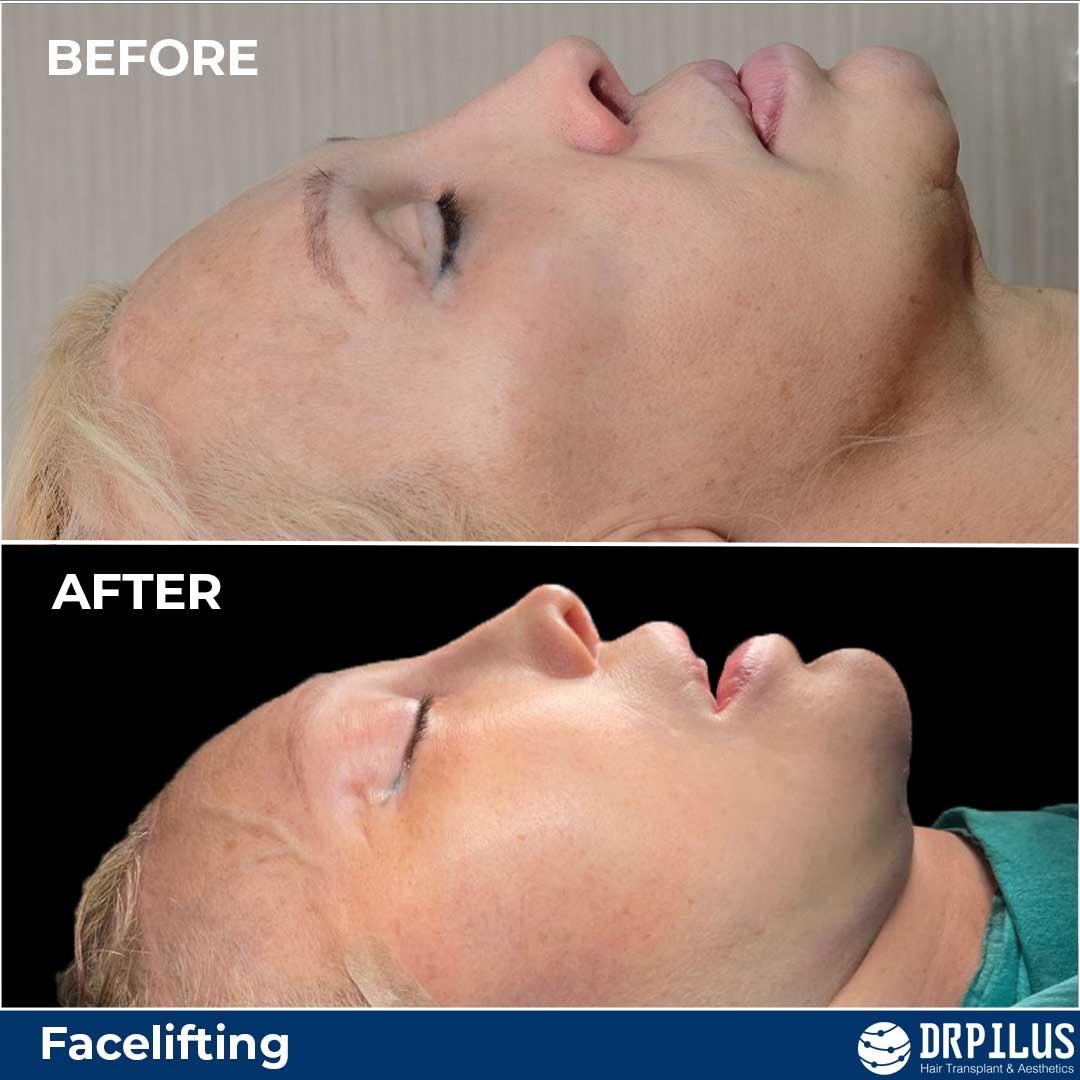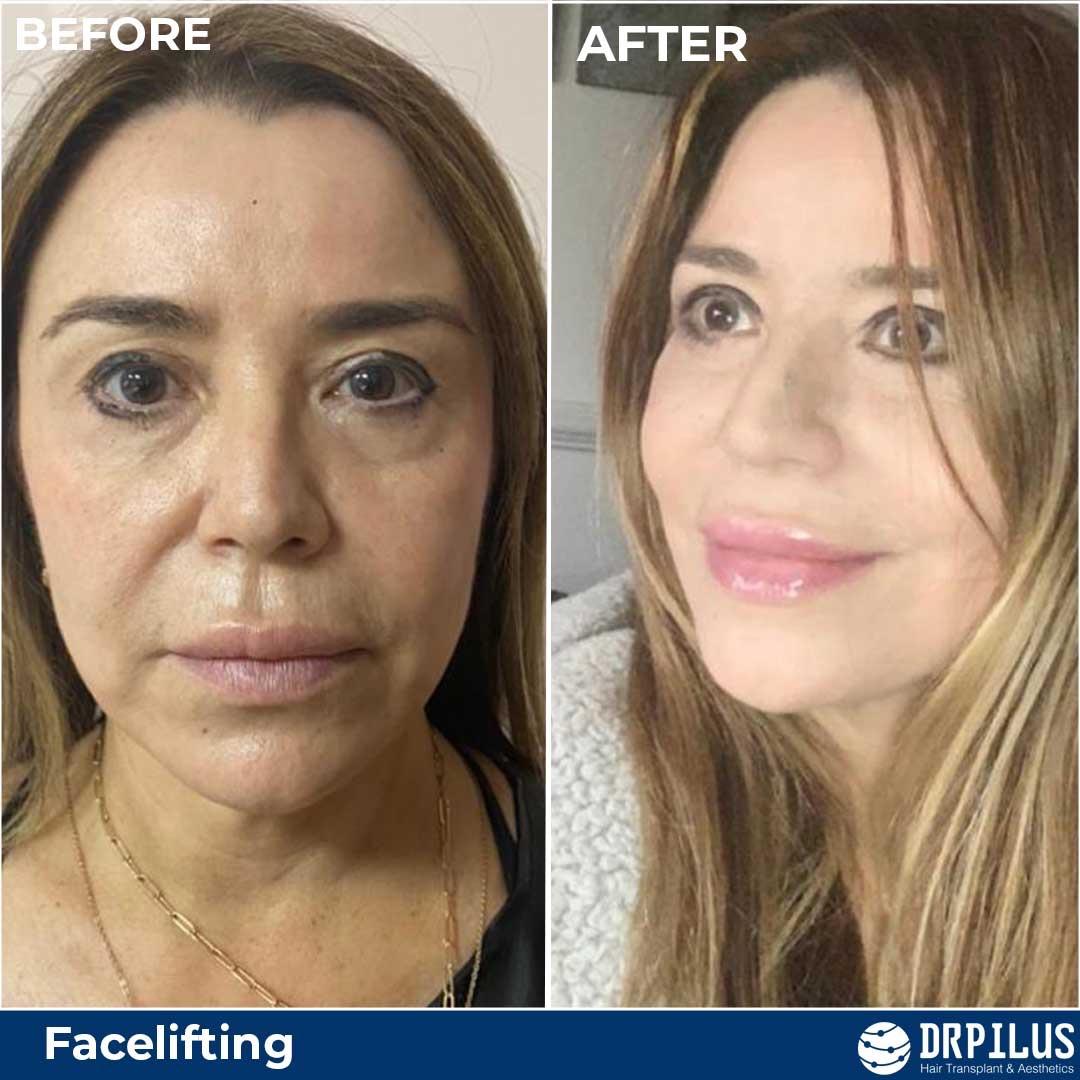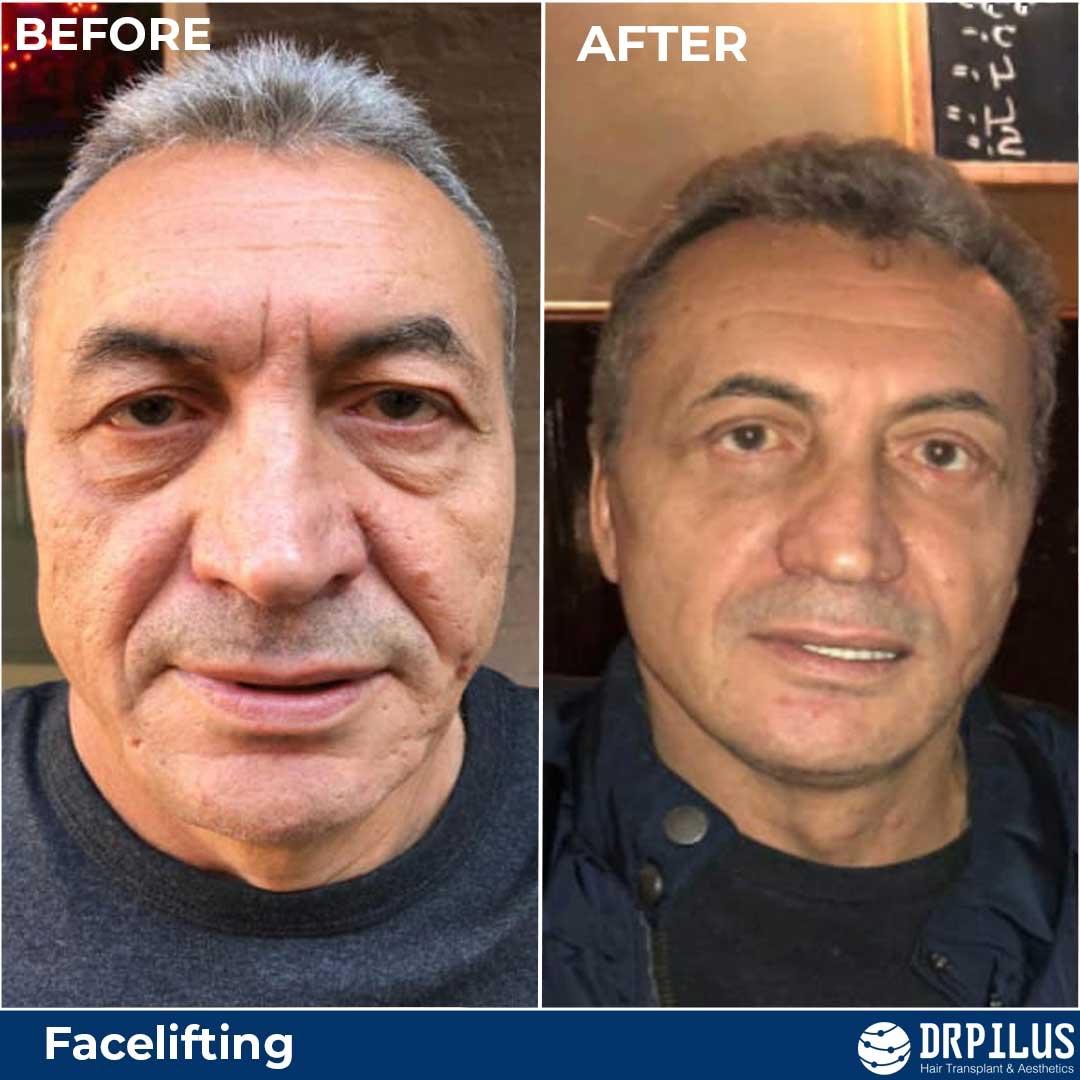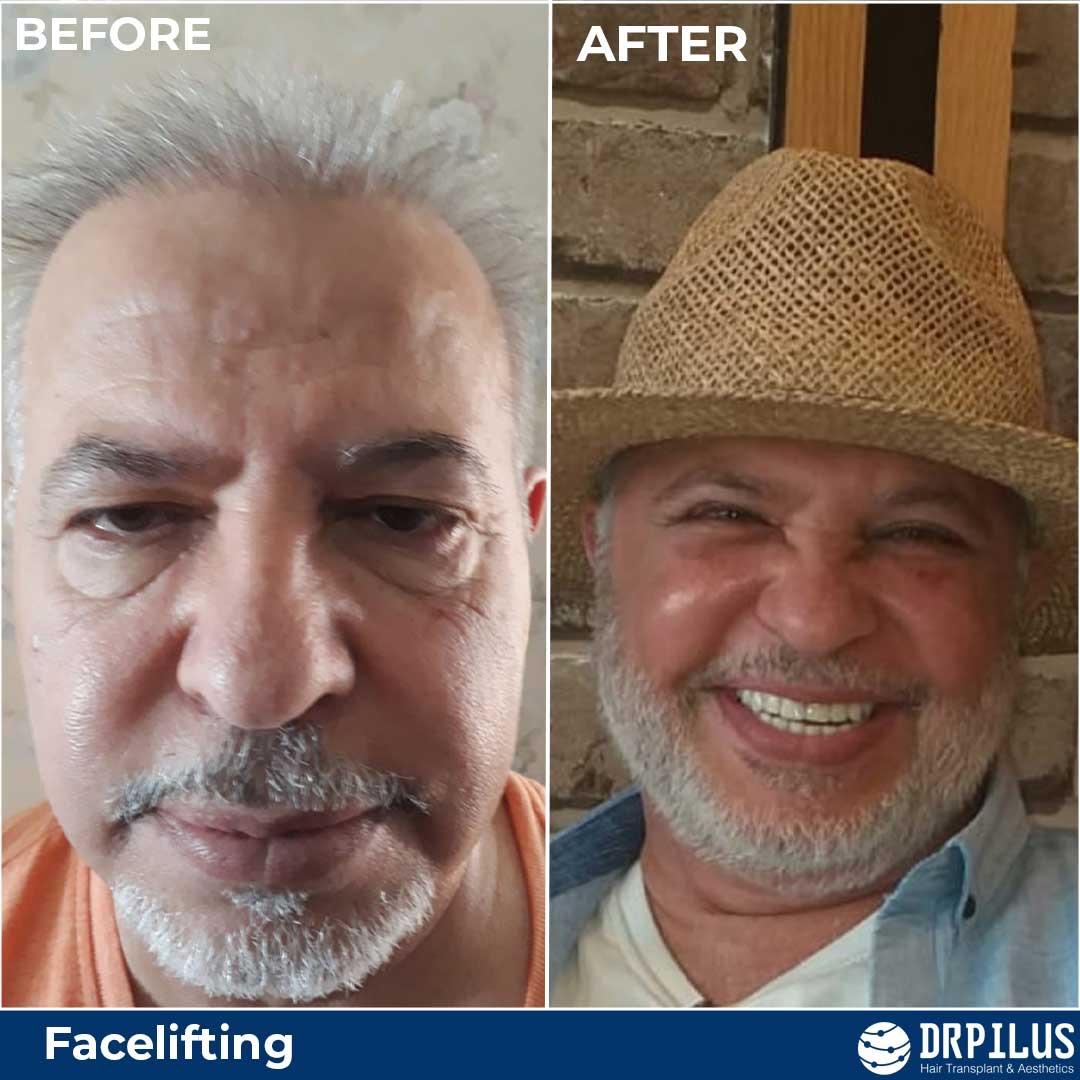Face Lifting in Turkey 2023
As we age, our skin loses elasticity and begins to sag, making us look older than we feel. This is where a face lifting procedure comes in. A face lift is a surgical procedure that can improve the visible signs of aging on the face and neck, helping you look more youthful and refreshed.
What is Face Lifting?
Face lifting, also known as rhytidectomy, is a surgical procedure that lifts and tightens the skin and underlying muscles of the face and neck. This procedure can help reduce wrinkles, sagging skin, and other signs of aging, giving you a more youthful appearance.
The Benefits of Face Lifting in Turkey
If you're considering a face lifting procedure, you may be wondering where to go. Turkey is a popular destination for cosmetic surgery, and for good reason. Here are some benefits of getting a face lift in Turkey:
Cost-effectiveness compared to other countries:
One of the biggest benefits of getting a face lift in Turkey is the cost. Cosmetic surgery in Turkey is often much more affordable than in other countries, without compromising on quality.
Experienced surgeons and medical staff:
Turkey has a reputation for excellence in cosmetic surgery, and Dr. Pilus is no exception. Our team of experienced surgeons and medical staff have the knowledge and expertise to give you the results you desire.
Modern facilities and advanced technology:
At Dr. Pilus, we use state-of-the-art technology and modern facilities to ensure the best possible outcome for our patients. Our facilities are equipped with the latest equipment and technology to make your experience as comfortable and safe as possible.
Short waiting times:
Compared to other countries, the waiting times for cosmetic surgery in Turkey are often much shorter. This means you can get your procedure done quickly and efficiently, without having to wait months or even years.
All-Inclusive Packages:
At Dr. Pilus, we offer all-inclusive packages that cover everything from your procedure to your accommodation and transportation. This makes your experience as stress-free as possible, allowing you to focus on your recovery.

Dr Pilus: Best Face Lifting Surgery Center in Turkey
If you're looking for the best face lifting surgery center in Turkey, look no further than Dr. Pilus. Our team of experienced surgeons and medical staff are dedicated to providing the best possible care and results for our patients. Here's why we are the best:
Qualifications and credentials
At Dr. Pilus, we only employ the most qualified and experienced surgeons and medical staff. Our team has years of experience in the field of cosmetic surgery, and we are dedicated to staying up-to-date with the latest techniques and technology.
Experience and expertise
Our team of surgeons has performed hundreds of face lifting procedures, giving them the experience and expertise necessary to provide the best possible results. We take a personalized approach to each patient, ensuring that we understand their specific needs and desires.
Face Lifting Before and After Photos
We understand that seeing is believing, which is why we provide before and after photos of our previous patients who have undergone a face lifting procedure at Dr. Pilus. These photos show the incredible results that we have achieved for our patients, and give you a glimpse of what you can expect from our services.




Patient Reviews and Testimonials
We take pride in the results that we provide, and our patients agree. We have received numerous positive reviews and testimonials from our satisfied patients, praising our expertise, care, and professionalism.
If you're considering a face lifting procedure in Turkey, don't just take our word for it. Hear what our previous patients have to say and see the results for yourself.
The Face Lifting Procedure
Step-by-Step Process of a Face Lifting Procedure
Anesthesia: Before the procedure begins, you will be given anesthesia to ensure your comfort during the surgery. Your surgeon will discuss with you which type of anesthesia is best for you.
Incisions: Once the anesthesia has taken effect, your surgeon will make incisions around the hairline and/or behind the ears, depending on the extent of the procedure.
Lift and Tighten: Your surgeon will then lift and tighten the underlying tissues and muscles to create a more youthful and refreshed appearance.
Remove Excess Skin: Any excess skin will be trimmed and removed before the incisions are closed with sutures or surgical tape.
What to Expect Before, During, and After the Procedure
Before the Procedure:
Before the procedure, you will have a consultation with your surgeon to discuss your goals, medical history, and any concerns you may have. You will also be given pre-operative instructions to follow in the days leading up to the surgery.
During the Procedure:
During the procedure, you will be under anesthesia and will not feel any pain. The procedure typically takes 2-4 hours, depending on the extent of the procedure.
After the Procedure:
After the procedure, you will need to rest and allow time for your body to heal. Your surgeon will provide you with aftercare instructions and will schedule a follow-up appointment to monitor your progress.

Potential Risks and Complications
As with any surgical procedure, there are potential risks and complications associated with face lifting. These can include infection, bleeding, scarring, and nerve damage. However, by choosing an experienced and qualified surgeon, and following all aftercare instructions, the risk of complications can be minimized.
Aftercare and Recovery
The recovery process is an important part of the face lifting procedure, as it allows your body to heal properly and achieve the desired results. It's important to follow your surgeon's aftercare instructions closely to ensure a smooth recovery process.
Tips for Post-Surgery Care
To ensure a successful recovery, it's important to follow these tips for post-surgery care:
- Keep your head elevated to reduce swelling
- Apply cold compresses to the treated area to reduce swelling and bruising
- Avoid direct sunlight and use sunscreen to protect your skin
- Avoid smoking, as it can slow down the healing process
- Eat a healthy diet and stay hydrated to promote healing
Timeline for Recovery
The timeline for recovery can vary depending on the individual and the extent of the procedure. Most patients are able to return to work and resume normal activities within 2-3 weeks after the procedure. However, it can take several months for the final results to fully develop as the swelling and bruising subside.

Frequently Asked Questions about Face Lifting in Turkey 2023
If you are considering face lifting in Turkey, you may have a lot of questions in mind. To help you make an informed decision, we have compiled some of the most frequently asked questions about the procedure.
What is the cost of face lifting in Turkey in 2023?
The cost of face lifting in Turkey varies depending on the type of procedure, the extent of the treatment, and the experience of the surgeon. However, compared to other countries, the cost of face lifting in Turkey is generally more affordable. At Dr. Pilus, we offer competitive prices for our face lifting procedures, and our all-inclusive packages make it easier for our clients to plan and budget for their treatment.
How long do the results last?
The longevity of the results of a face lifting procedure depends on several factors such as age, skin type, lifestyle, and the type of procedure performed. Generally, the effects of face lifting can last from 5 to 10 years. However, maintaining a healthy lifestyle and using proper skin care can help prolong the results.
Is face lifting painful?
Face lifting is generally not a painful procedure, as it is performed under local anesthesia or sedation. However, you may experience some discomfort, swelling, and bruising in the first few days after the procedure. Our medical staff at Dr. Pilus will provide you with pain relief medication and detailed instructions on how to manage any discomfort.
Can I travel after the procedure?
It is recommended that you rest and avoid any strenuous activity for at least a week after the procedure. It is also best to avoid traveling long distances or taking flights during the initial stage of your recovery, as changes in air pressure may affect the healing process. We advise our clients to plan their travel arrangements accordingly.
Are there any risks associated with face lifting?
As with any surgical procedure, there are potential risks and complications associated with face lifting. Some of these risks include infection, bleeding, nerve damage, and scarring. However, at Dr. Pilus, our experienced and qualified surgeons use modern techniques and technology to minimize the risks and ensure a safe and successful procedure.
Am I a good candidate for face lifting in Turkey?
If you are in good physical and mental health, have realistic expectations about the results of the procedure, and have discussed your concerns and goals with a qualified surgeon, you may be a good candidate for face lifting in Turkey. Our team at Dr. Pilus will conduct a thorough evaluation and provide you with personalized advice on whether face lifting is the right procedure for you.
At Dr. Pilus, we are committed to providing our clients with safe, effective, and affordable face lifting procedures. If you have any further questions or concerns, please do not hesitate to contact us.
What should I expect during my first consultation?
At Dr. Pilus, we prioritize a comprehensive consultation process to ensure that all of our patients have a full understanding of the face lifting procedure and can make an informed decision about their treatment. During your initial consultation, you will have the opportunity to meet with one of our experienced surgeons to discuss your goals and expectations for the procedure.
Our surgeon will evaluate your medical history, current health status, and facial anatomy to determine if you are a good candidate for face lifting. We will also take the time to answer any questions or concerns you may have about the procedure. We believe that an open and honest dialogue between our surgeon and patient is essential for a successful outcome.
How long does the procedure take?
The duration of the face lifting procedure depends on the extent of the treatment and the specific techniques used. Generally, the procedure can take anywhere from two to six hours. During the procedure, our surgeons make incisions in inconspicuous areas to lift and tighten the skin and muscles of the face, resulting in a more youthful and rejuvenated appearance.
What are the qualifications of the surgeon performing the procedure?
At Dr. Pilus, we only employ highly qualified and experienced surgeons who specialize in cosmetic surgery. Our surgeons are board-certified and have years of experience performing face lifting procedures. We believe in providing our patients with the highest level of care and expertise.
Is it painful?
During the procedure, our patients are under general anesthesia, so they do not feel any pain. After the procedure, some discomfort and swelling may occur, but we prescribe pain medication to manage any discomfort. Our team is committed to ensuring that our patients have a comfortable and pain-free recovery process.
When can I return to work?
The recovery period varies depending on the individual patient and the extent of the procedure. However, most patients can return to work within two to three weeks after the procedure. It's important to avoid strenuous activities and limit sun exposure during the recovery period to promote proper healing.
How much does it cost to have a face lifting in Turkey?
The cost of face lifting in Turkey is generally more affordable compared to other countries while maintaining a high level of quality and expertise. At Dr. Pilus, we offer all-inclusive packages that cover the procedure, post-operative care, and accommodation during your stay in Istanbul. The cost of your face lifting procedure will depend on the specific techniques used and the extent of the treatment. Our team will provide you with a detailed cost estimate during your consultation.
Will the results be permanent?
While a face lifting procedure can provide long-lasting results, it's important to understand that the natural aging process will continue to occur. However, the results can be maintained with proper aftercare and a healthy lifestyle. Our team will provide you with guidance and tips for post-surgery care to help you achieve the best possible outcome.
